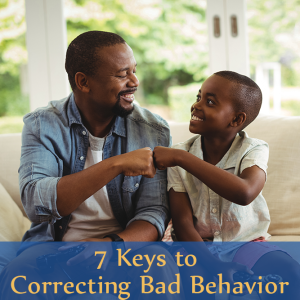6 Digital Dangers & Sensible Solutions for Families
While sitting at an airport I saw a darling girl, maybe age 14, sitting on a different row of seats than the rest of her family. The parents and brother were talking and trying to engage her in their activities and conversation, but she was in her own little world and would not participate. For hours she sat looking at her phone with a smile on her face and ear buds in her ears.
When parents see such a smile on the 14-year-old’s face, many may think the girl is engaged in something good for herself. But I saw missed opportunities and potential problems. She was living in a digital world instead of a real world, and she was missing a great opportunity to bond with her family.
This scene isn’t unique. It happens all over the globe daily. Youth are becoming more and more disconnected from family and reality. How is this happening? Do parents need to put up with it just because it’s part of our modern culture? What can parents do to prepare their children not to fall into the digital traps waiting to take their time and attention?
Below are six of the most common digital dangers facing families. Following each danger is a sensible and simple solution for avoiding those dangers. These dangers are not listed in any particular order.
6 Digital Dangers & Sensible Solutions
- Danger: Digital devices are used as toys and distractions when there is nothing else to do. Adults and children easily fall into the trap of becoming dependent upon digital devices during idle time. While waiting, or when there’s free time, it’s popular to “zone out” on devices instead of talking to people and practicing social skills.
Sensible Solution: Improve family time and relationships by thinking of devices as tools. Years ago I told my children that the reason we didn’t just plug in and “zone out” every day was because we know digital devices are tools, not toys. When parents treat their devices as tools, then children will do likewise. Setting the example is important. Classifying the object being used creates a feeling of ownership and empowerment. This allows us to govern the devices, instead of having them govern us. Our family has a family document called “The Family Standard.” It details how and when devices will be used, which helps to encourage the tool mindset.
- Danger: Children are given their own digital devices. When digital devices are given to children, the device oftentimes tends to create a type of freedom in the minds of children. This is an unhealthy freedom. Since digital devices are tools, they should be respected just as a power saw would be respected. Parents repeatedly tell me of media and device addictions their children have, and then express concern about not being able to take the device away because it belongs to the child.
Sensible Solution: Decide what level of self-government is required for a child to use a digital device, and then only allow children to use devices, not own them. If they already think they own them, make sure the children know that you can give them a “no” answer about using that device at any time because you are their parent.
- Danger: Trusting a child will never become overly attached to the device or get into inappropriate media. No matter how well children are raised or how good they are, when they use a digital device they are always at risk for seeing or reading something that would not support family or religious standards. Media and sexual addictions can and do happen to the best children.
Sensible Solution: Never allow children to have a digital device in their room, especially at night. I’ve noticed that the majority of inappropriate digital activity happens when people are alone with their devices. One way to decrease alone time with a device is to have a standing rule that digital devices don’t ever go into bedrooms and that they need to be in the parent’s care at night.
- Danger: Letting children use digital devices regularly or when they want to. Obsession of digital distraction or stimulation easily results if children don’t have limits.
Sensible Solution: Set time limits and teach your children that even if a media time is promised, a “no” answer can be given at any time a parent feels it’s important. This means the child needs to learn how to accept a “no” answer.
- Danger: Allowing children to set passwords and protections on devices. So many times I’ve seen children who have their own login on computers and devices. Oftentimes, the reason is to keep their projects separate from their parent’ s projects. While this sounds convenient, it can make it really hard for parents to keep children safe because this allows computers and devices to be turned on at any time and used — without parents knowing.
Sensible Solution: Parents need to be involved in login time, use time, and protection measures. Set filters and access usage reports regularly. Even phones can have filters added. Be the one who logs the children onto the computer, and be in the room when they are working on it. If the children learn that safety on digital devices needs to be two people deep, then they will set a lifelong pattern of only looking at things that could be viewed in a group. It will keep them safe and self-governing in the future.
- Danger: Not regularly talking about media dangers and inappropriate usage. It can feel awkward for parents to discuss pornography, as well as addiction to games or other media stimulation. Some parents may not know now to approach the subjects, but they need to be discussed.
Sensible Solution: Each week have parent/child mentor meetings to discuss media addictions, treatment plans, boundaries and the feeling of power over the devices. Also discuss other topics such as relationships, personal behaviors, desires, friends and school. When parents take 15-30 minutes weekly to talk with their children, then issues are addressed before they become too big. These discussions help forge strong bonds that will create a lifetime of good parent/child communication and understanding.
Visit teachingselfgovernment.com/store to learn more about accepting “no” answers, family standards, mentor meetings, and creating a strong self-governing environment.





